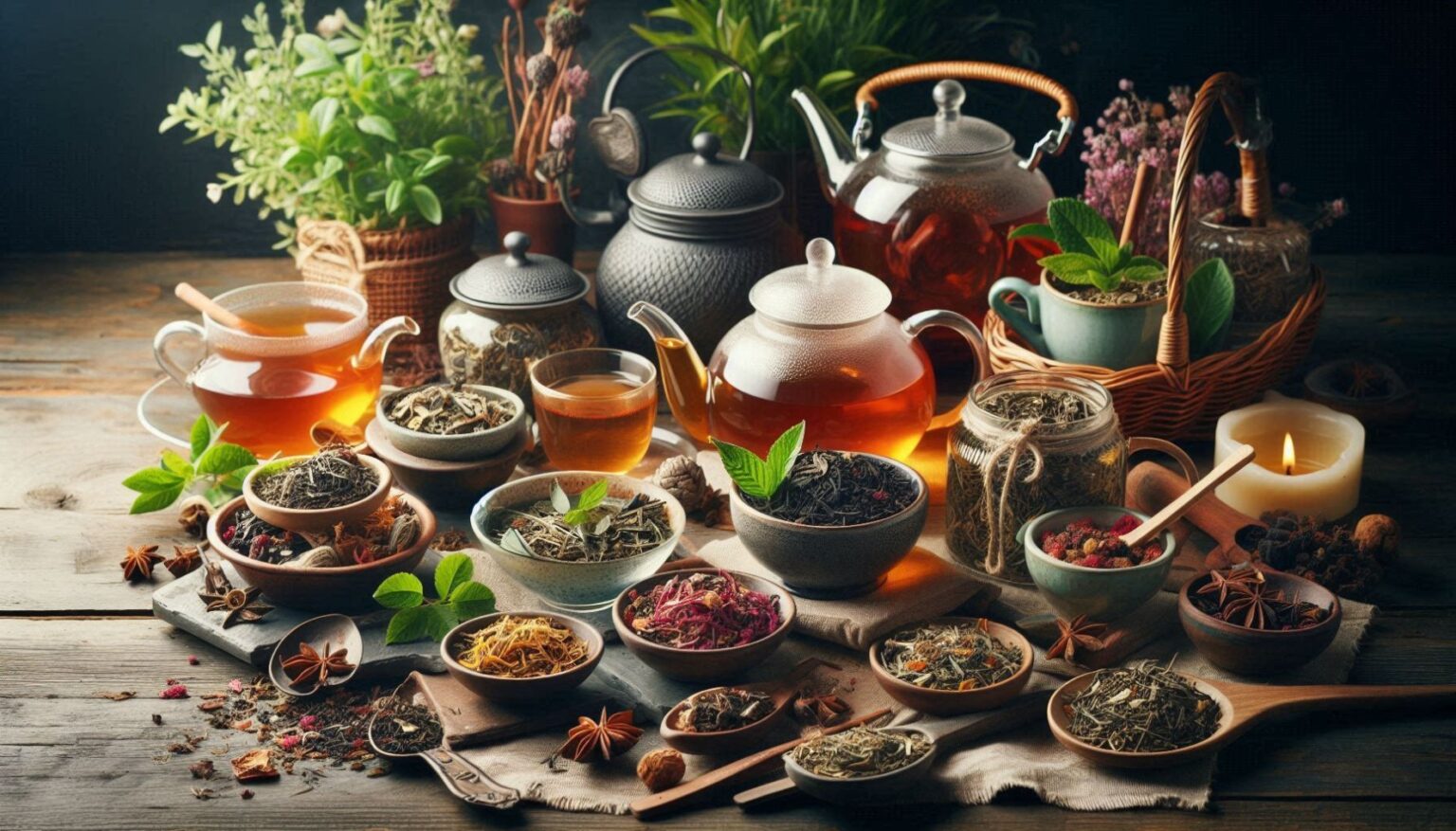
“Have you ever sipped on a warm cup of herbal tea and felt an instant wave of calm and comfort? Herbal teas not only offer a delightful variety of flavors but also come packed with numerous health benefits, from soothing a sore throat to helping you relax after a long day.”
Herbal teas have been enjoyed for centuries, treasured not only for their taste but also for their medicinal properties. Whether you’re looking to boost your immunity, improve digestion, or simply find a moment of peace, there’s a herbal tea for every need.
In this blog, we’ll explore five creative ways to brew your favorite herbal teas using everyday kitchen tools, ensuring you can enjoy these benefits without the need for specialized equipment.
We’ll cover methods using a mason jar, saucepan, microwave, French press, and thermos, giving you practical and easy ways to make your perfect cup of herbal tea.

Method 1: Mason Jar
Brewing tea in a mason jar offers several unique advantages, making it a versatile and convenient option for tea enthusiasts. Here’s why a mason jar is a great tool for brewing tea:
- Versatility
– Hot and Cold Brew: Mason jars are perfect for both hot and cold brewing. You can easily pour boiling water into them for a hot brew or use them to steep tea in cold water for a refreshing iced tea.
– Variety of Teas: Whether you’re using loose leaf tea or tea bags, a mason jar can accommodate all types of teas. You can even experiment with tea blends and add fresh herbs or fruits directly into the jar.
- Convenience
– Easy to Use: Simply add your tea, pour in the water, seal the jar, and let it steep. There’s no need for special equipment or complicated steps.
– On-the-Go: Mason jars come with secure lids, making them portable. You can brew your tea and take it with you wherever you go, ensuring you have a fresh beverage on hand.
- Visual Appeal
– See the Brew: The clear glass allows you to watch the tea leaves unfurl and the water change color, adding a visual element to the brewing process. This can be particularly enjoyable with colorful herbal teas.
– Presentation: Mason jars have a rustic and charming look, which makes them perfect for serving tea, especially when entertaining guests.
- Durability
– Sturdy Construction: Mason jars are made of thick glass that can withstand boiling water, making them durable and reliable for regular use.
– Reusable: Unlike disposable tea bags or single-use plastic containers, mason jars are eco-friendly and reusable. They are easy to clean and maintain, reducing waste.
- Customization
– Infusions and Add-Ins: You can easily add fresh ingredients like mint, lemon slices, ginger, or honey directly into the jar. The wide mouth of the jar makes it easy to mix and infuse different flavors.
– Personalized Blends: Brew large batches or single servings based on your needs. You can experiment with different tea strengths and infusion times to create your perfect cup.
Example Steps for Using a Mason Jar to Brew Tea:
- Add Tea: Place loose leaf tea or tea bags into the mason jar.
- Pour Water: Pour boiling water over the tea for a hot brew or cold water for an iced brew.
- Seal and Steep: Close the jar with its lid and let the tea steep for the desired time. For cold brew, refrigerate the jar for several hours or overnight.
- Strain and Serve: Use a mesh strainer or cheesecloth to remove the tea leaves. Pour the brewed tea into a cup and enjoy.
Mason jars are not only practical and versatile but also enhance the overall tea brewing experience. Their durability, ease of use, and ability to double as a serving vessel make them an excellent choice for anyone looking to enjoy a perfect cup of tea.
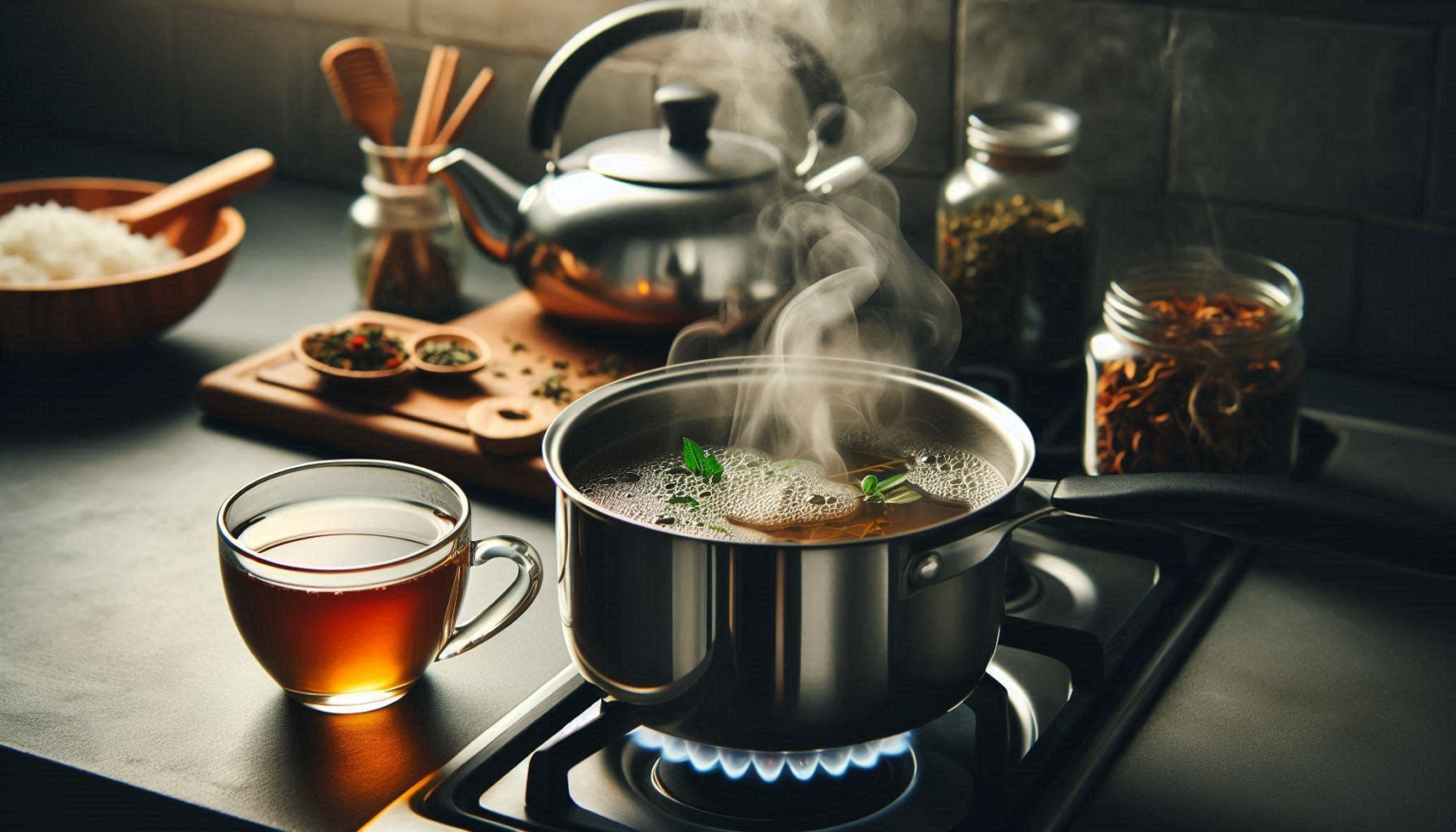
Method 2: Saucepan
Brewing tea in a saucepan is a practical and convenient method that offers several benefits, making it an excellent option for tea enthusiasts. Here’s why using a saucepan is a convenient way to brew tea:
- Simple and Accessible
– Common Kitchen Tool: Most households have a saucepan, making this method accessible without the need for special equipment.
– Easy to Use: The process is straightforward—add tea and water, heat, and steep. There are no complex steps or techniques required.
- Perfect for Large Batches
– Family and Friends: Brewing in a saucepan allows you to make larger quantities of tea at once, which is perfect for serving multiple people. Whether you’re hosting a gathering or just preparing tea for the family, a saucepan can accommodate larger volumes.
– Batch Preparation: You can brew a large batch of tea and store it in the refrigerator for later use, saving time and ensuring you always have tea ready to go.
- Effective Heat Control
– Temperature Precision: Using a saucepan on the stovetop gives you precise control over the water temperature, which is essential for brewing different types of teas. You can easily adjust the heat to avoid over-boiling delicate teas.
– Simmering Option: Some herbal teas benefit from a gentle simmer to extract maximum flavor and nutrients. A saucepan allows you to maintain a steady, low heat for this purpose.
- Versatility
– Infusions: A saucepan is ideal for making tea infusions. You can add various ingredients such as spices, herbs, or fruits directly into the pot, allowing the flavors to meld together as they simmer.
– Multiple Uses: Beyond brewing tea, a saucepan can also be used to make chai, mulled tea, or other hot beverages that require simmering multiple ingredients.
- Ease of Straining
– Straining Options: After brewing, you can easily strain the tea using a fine mesh strainer or a slotted spoon. The wide opening of a saucepan makes it convenient to pour and strain the tea directly into cups or a serving pot.
- Durability and Maintenance
– Sturdy Material: Saucepans are typically made of durable materials like stainless steel or aluminum, which can withstand high temperatures and repeated use.
– Easy to Clean: Cleaning a saucepan is simple, whether by hand or in the dishwasher. This convenience extends to brewing tea, as any residue from tea leaves or spices can be easily washed away.
Example Steps for Using a Saucepan to Brew Tea:
- Add Tea: Place loose leaf tea or tea bags into the saucepan.
- Pour Water: Add the appropriate amount of water to the saucepan.
- Heat: Place the saucepan on the stove and bring the water to a gentle boil. For more delicate teas, you might heat the water to just below boiling.
- Simmer and Steep: Reduce the heat to a simmer and let the tea steep for the desired amount of time, typically 5-10 minutes, depending on the type of tea.
- Strain and Serve: Use a fine mesh strainer to remove the tea leaves as you pour the tea into cups. Serve immediately or transfer to a teapot for serving.
Using a saucepan to brew tea is a convenient, versatile, and efficient method, especially when preparing larger quantities or infusing various ingredients. The precise heat control and ease of straining make it an excellent choice for both casual tea drinkers and those looking to explore more complex tea preparations.
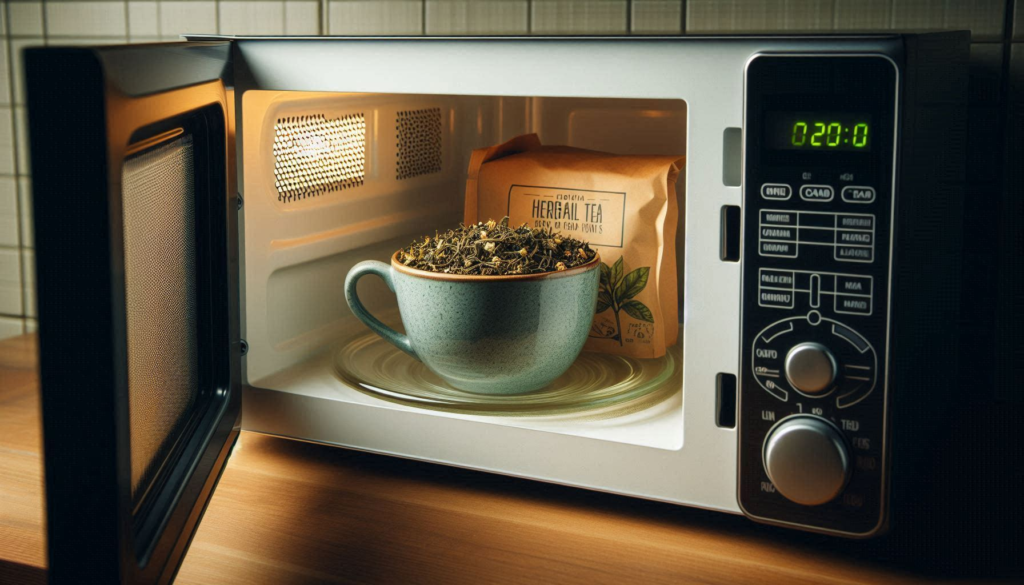
Method 3: Microwave
Brewing tea in a microwave is a fast and convenient method, especially when you’re in a hurry or don’t have access to a stovetop. Here’s a step-by-step guide on how to brew tea quickly using a microwave:
Step-by-Step Guide
Step 1: Gather Your Supplies
– Microwave-Safe Mug: Ensure you use a mug that is safe for microwave use.
– Tea: You can use either a tea bag or loose leaf tea. If using loose leaf tea, you will need a tea infuser or a fine mesh strainer.
– Water: Fresh, cold water is best for brewing tea.
– Optional Add-ins: Sweeteners like honey or sugar, milk, or lemon slices can be added after brewing.
Step 2: Add Water to the Mug
– Fill your microwave-safe mug with the desired amount of water. Make sure to leave some space at the top to prevent boiling over.
Step 3: Heat the Water
– Place the mug of water in the microwave.
– Heat the water on high for about 1-2 minutes. The exact time may vary depending on your microwave’s power and the amount of water. For most microwaves, 1 minute per cup (8 oz) of water is a good starting point.
Step 4: Add the Tea
– After heating, carefully remove the mug from the microwave.
– For Tea Bags: Place the tea bag in the hot water.
– For Loose Leaf Tea: Place the tea infuser filled with loose leaf tea into the mug.
Step 5: Steep the Tea
– Let the tea steep for the recommended time based on the type of tea you are using:
– Herbal Tea: 5-10 minutes
– Green Tea: 2-3 minutes
– Black Tea: 3-5 minutes
– Adjust the steeping time according to your taste preference. The longer the steeping time, the stronger the tea.
Step 6: Remove the Tea
– For Tea Bags: Remove the tea bag from the mug and discard it.
– For Loose Leaf Tea: Remove the infuser or use a fine mesh strainer to strain out the tea leaves.
Step 7: Add Optional Ingredients
– If desired, add sweeteners like honey or sugar, milk, or lemon slices to your brewed tea.
– Stir well to combine.
Step 8: Enjoy Your Tea
– Your tea is now ready to drink! Be cautious as it may be very hot.
Tips and Considerations
– Microwave Power: Adjust the heating time based on your microwave’s wattage. High-wattage microwaves may require less time.
– Avoid Overheating: Be careful not to overheat the water, as microwaving water beyond its boiling point can cause it to superheat and potentially erupt. It’s usually safe to heat it just until it starts to boil.
– Stirring: Stir the water before adding the tea to ensure even heat distribution.
– Covering the Mug: Covering the mug with a small plate or microwave-safe cover while steeping can help retain heat and brew the tea more effectively.
Using a microwave to brew tea is a quick and easy method, perfect for busy mornings or when you need a fast cup of tea. With just a few simple steps, you can enjoy a perfectly brewed cup of tea in minutes.
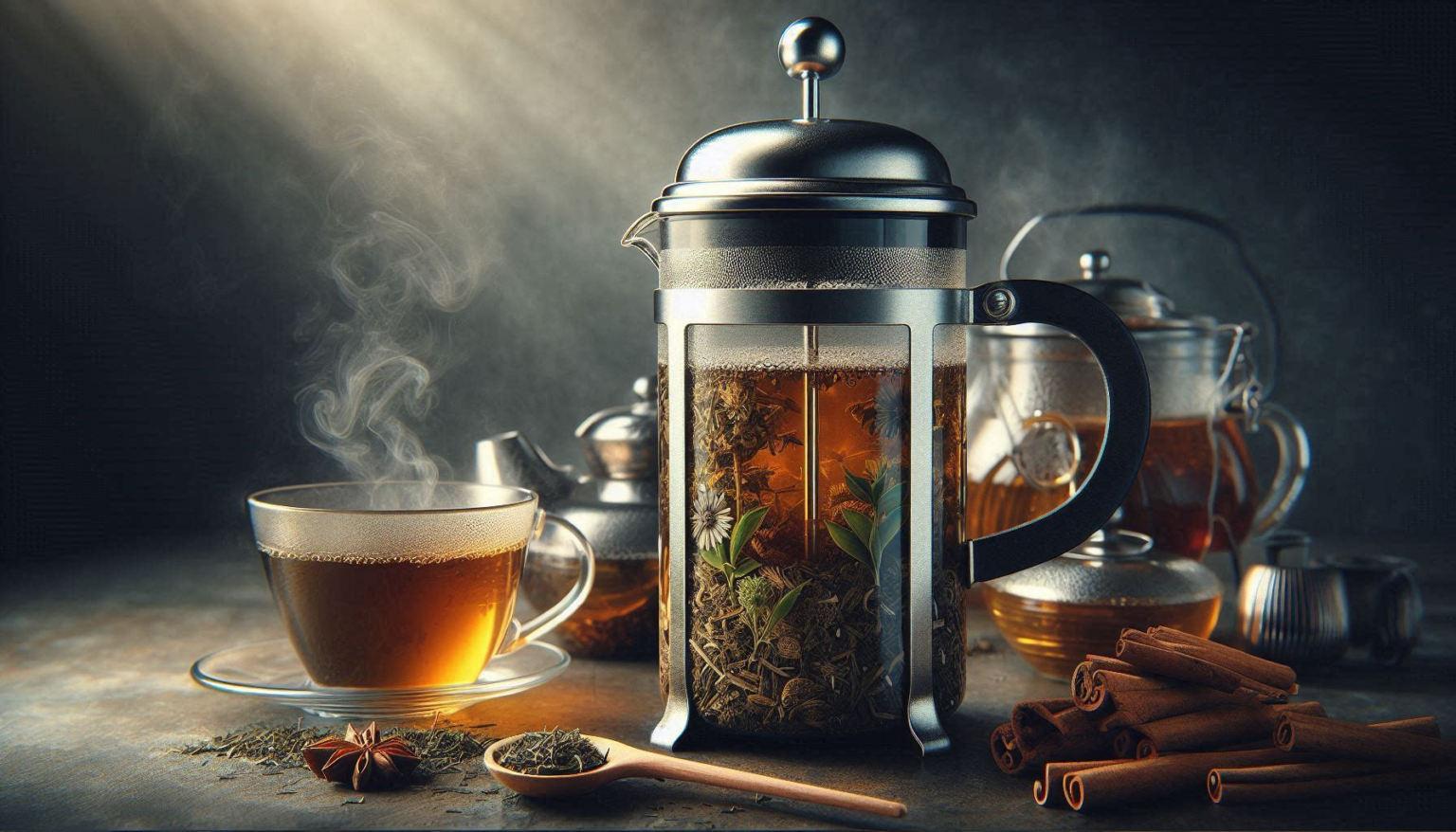
Method 4: French Press
The French press, often associated with coffee, is a surprisingly versatile tool that can be used to brew a perfect cup of tea. Its design and functionality make it an excellent option for tea enthusiasts who appreciate both convenience and quality. Here’s why the French press is a great tool for making tea:
- Efficient Brewing Process
– Full Extraction: The French press allows tea leaves to fully expand and steep, ensuring maximum flavor extraction. This results in a rich and aromatic cup of tea.
– Control Over Steeping Time: You can easily control the steeping time by simply pressing the plunger down when your tea reaches the desired strength.
- Versatility
– Various Tea Types: The French press can be used to brew all kinds of teas, from delicate green teas to robust black teas and complex herbal blends.
– Infusions and Blends: It’s also ideal for making herbal infusions and tea blends, allowing you to mix and steep various ingredients such as fresh herbs, spices, and fruits.
- Ease of Use
– Simple Process: The process of brewing tea in a French press is straightforward—add tea, pour hot water, steep, and press. There’s no need for additional equipment or complex steps.
– Minimal Cleanup: The French press is easy to clean. After brewing, simply discard the tea leaves, rinse the press, and it’s ready for the next use.
- Consistent Results
– Even Steeping: The mesh plunger ensures that the tea leaves are evenly submerged in water, promoting consistent steeping and flavor.
– No Tea Bags Needed: Using loose leaf tea in a French press eliminates the need for tea bags, allowing the full flavor and aroma of the tea leaves to be enjoyed.
Example Steps for Using a French Press to Brew Tea:
Step 1: Prepare the French Press
– Ensure your French press is clean and ready for use.
Step 2: Add Loose Leaf Tea
– Add the appropriate amount of loose leaf tea to the bottom of the French press. A general guideline is 1 teaspoon of tea per 8 ounces of water, but you can adjust based on your preference and the type of tea.
Step 3: Pour Hot Water
– Heat water to the appropriate temperature for your type of tea. Pour the hot water over the tea leaves in the French press. Use:
– About 175-185°F (80-85°C) for green tea.
– About 190-200°F (88-93°C) for black tea.
– Boiling water for herbal teas.
Step 4: Steep the Tea
– Place the lid on the French press without pressing the plunger down. Let the tea steep for the recommended time:
– 2-3 minutes for green tea.
– 3-5 minutes for black tea.
– 5-10 minutes for herbal tea.
Step 5: Press and Serve
– After steeping, slowly press the plunger down to separate the tea leaves from the brewed tea. Pour the tea into your cup.
Step 6: Enjoy Your Tea
– Your tea is now ready to drink. Add any sweeteners or additional ingredients as desired.
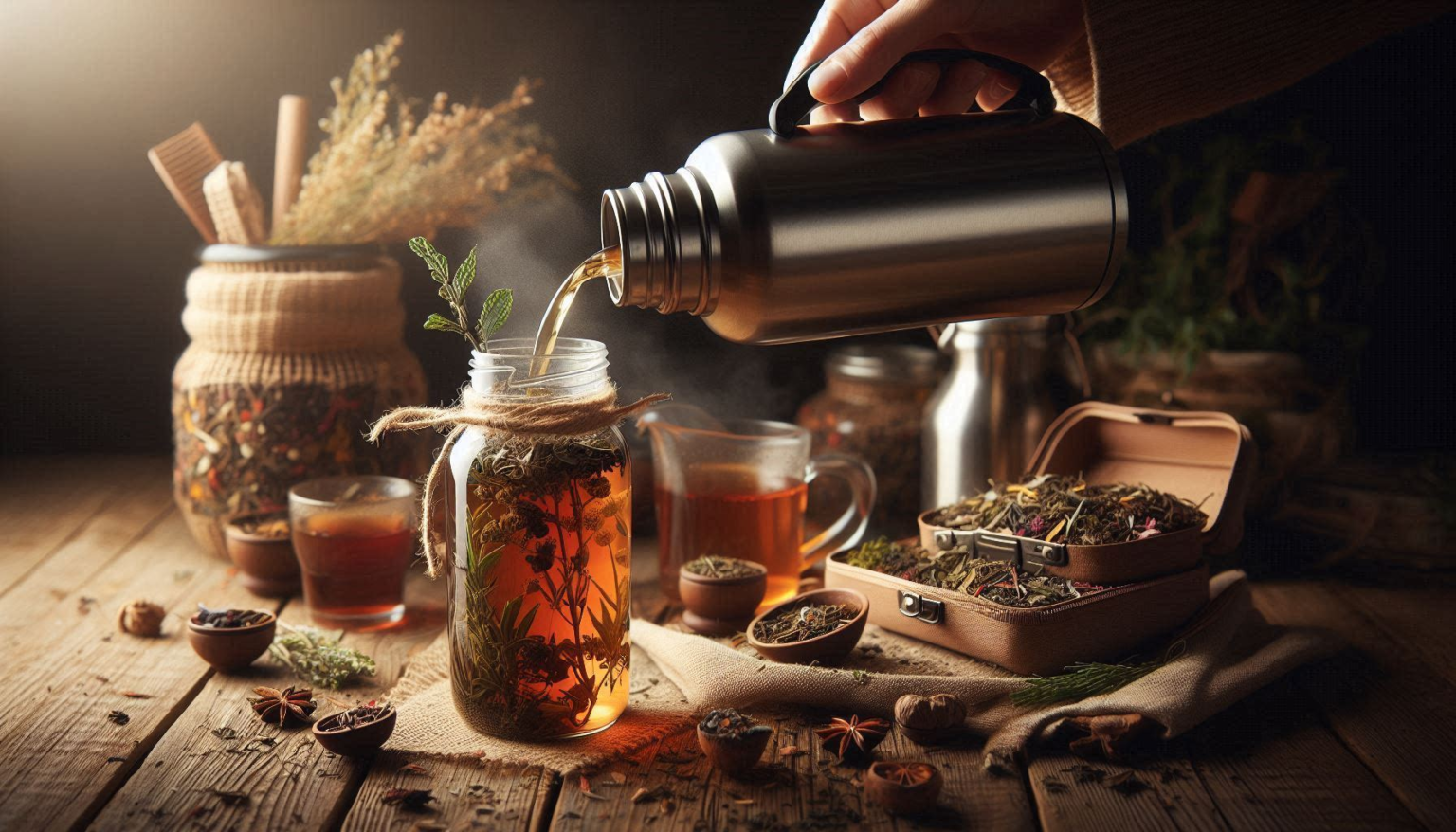
Method 5: Thermos
The thermos is not just a vessel for keeping beverages hot—it’s also a fantastic tool for brewing and maintaining the perfect temperature of your favorite teas. Here’s why the thermos stands out as an excellent choice for tea enthusiasts:
- Brewing Convenience
– Built-In Steeping: The insulated design of a thermos allows you to brew tea directly inside it. Simply add tea leaves or tea bags, pour in hot water, and seal the thermos to let it steep.
– Effortless Preparation: With no need for additional pots or brewing equipment, brewing tea in a thermos is incredibly convenient, whether you’re at home, at work, or on the go.
- Temperature Retention
– Heat Preservation: Thermoses are designed to maintain the temperature of liquids for an extended period, keeping your tea hot for hours after brewing.
– Optimal Flavor Preservation: By sealing in heat, a thermos preserves the flavors and aromas of your tea, ensuring each sip is as delicious as the first.
- On-the-Go Enjoyment
– Portability: The compact and durable design of a thermos makes it ideal for travel and outdoor adventures. Whether you’re commuting, hiking, or picnicking, you can enjoy freshly brewed tea wherever you go.
– Long-Lasting Enjoyment: With a thermos, you can brew a large batch of tea in the morning and enjoy it throughout the day without worrying about it cooling down.
- Versatility
– Suitable for All Tea Types: Whether you prefer green tea, black tea, herbal infusions, or delicate white teas, a thermos can accommodate any type of tea.
– Cold Brew Option: Thermoses are also suitable for making cold brew tea. Simply add tea leaves and cold water, seal, and let it steep in the refrigerator overnight for a refreshing cold tea the next day.
- Ease of Cleaning
– Simple Maintenance: Thermoses are typically easy to clean, with wide openings and smooth interiors that make rinsing and scrubbing a breeze. Some models are even dishwasher-safe for added convenience.
Example Steps for Brewing Tea in a Thermos:
Step 1: Prepare the Thermos
– Ensure your thermos is clean and ready for use.
Step 2: Add Tea
– Place your desired amount of loose leaf tea or tea bags directly into the thermos.
Step 3: Pour Hot Water
– Heat water to the appropriate temperature for your type of tea.
– Pour the hot water over the tea leaves or tea bags in the thermos, leaving some space at the top to avoid spills.
Step 4: Seal and Steep
– Securely seal the thermos to lock in the heat and flavor.
– Let the tea steep for the recommended time, typically 3-5 minutes for most teas, or according to your preference.
Step 5: Enjoy Your Tea
– Once the tea has steeped to your liking, pour it into a cup and savor every sip. If you’re on the go, simply enjoy it directly from the thermos.
Conclusion
Brewing herbal tea can be a delightful and straightforward process using common kitchen tools. Here’s a quick summary of the five methods we discussed:
- Mason Jar: Add tea, pour boiling water, seal, steep, strain, and enjoy. Great for making iced tea.
- Saucepan: Simmer tea in water on the stove, strain, and serve. Ideal for larger batches.
- Microwave: Heat tea and water in a microwave-safe mug, steep, strain, and serve. Perfect for a quick cup.
- French Press: Steep tea in hot water, press the plunger, and pour. Excellent for strong, flavorful tea.
- Thermos: Brew tea directly in a thermos, steep, strain if needed, and enjoy on the go. Keeps tea warm for hours.
Try these methods and experiment with your favorite herbal tea blends. You might discover a new favorite way to brew your perfect cup!
Share your own creative brewing methods or favorite herbal tea recipes in the comments. We’d love to hear how you enjoy your herbal teas!
FAQs About Brewing Herbal Tea
- Can I use any type of herbal tea with these methods?
– Answer: Yes, these methods work with any type of herbal tea, whether it’s loose leaf or in tea bags. Feel free to experiment with different blends to find your favorite flavors.
- How long should I steep my herbal tea?
– Answer: Steeping time can vary based on the type of herbal tea and your personal preference. Generally, steeping for 5-10 minutes is a good starting point. Stronger flavors like ginger or peppermint may require less time, while more delicate teas like chamomile may benefit from a longer steep.
- Can I reuse herbal tea leaves or tea bags?
– Answer: Yes, you can usually reuse herbal tea leaves or tea bags once more. However, the second infusion will typically be weaker. Adjust steeping time to taste.
- What’s the best water temperature for brewing herbal tea?
– Answer: Most herbal teas can be brewed with water that has just reached a boil (about 212°F or 100°C). However, more delicate herbs might benefit from slightly cooler water to avoid bitterness.
- How can I sweeten my herbal tea?
– Answer: You can sweeten your herbal tea with honey, sugar, agave nectar, or even a splash of fruit juice. Adjust the amount based on your preference.
- Is it necessary to strain loose leaf herbal tea?
– Answer: Yes, straining is necessary to remove the leaves and any fine particles, ensuring a smooth and enjoyable tea. You can use a fine mesh strainer, cheesecloth, or a tea infuser.
- Can I make a large batch of herbal tea and store it?
– Answer: Absolutely! You can brew a large batch and store it in the refrigerator for up to a week. This is especially convenient for making iced herbal tea.
- Are there any herbs I should avoid using in my tea?
– Answer: While most herbs are safe, some might not be suitable for everyone, especially if you’re pregnant, nursing, or have certain health conditions. Always research or consult a healthcare provider before trying new herbs.
- Can I add other ingredients to my herbal tea?
– Answer: Yes, adding ingredients like fresh mint, lemon slices, ginger, or spices can enhance the flavor and benefits of your herbal tea. Feel free to get creative!
- How do I clean my French press or other tools after brewing herbal tea?
– Answer: Rinse your French press or other brewing tools immediately after use to remove any residual tea and herbs. For a deeper clean, use warm soapy water and a gentle brush.
By addressing these common questions, you’ll be better prepared to enjoy the full benefits and flavors of your herbal tea brewing adventures!
Check out other post How to make coffee with an electric kettle? 5 ways to brew coffee without coffee maker


